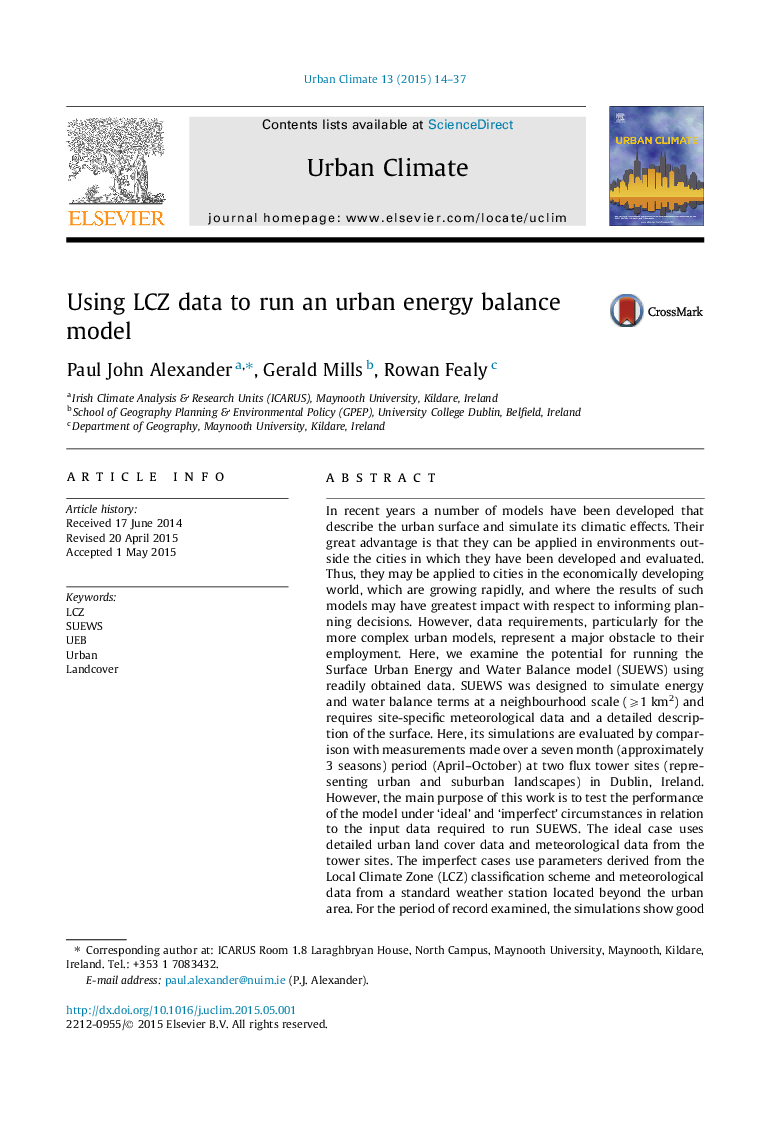| کد مقاله | کد نشریه | سال انتشار | مقاله انگلیسی | نسخه تمام متن |
|---|---|---|---|---|
| 143722 | 163467 | 2015 | 24 صفحه PDF | دانلود رایگان |
• Input parameters for complex UEB models represent a barrier for routine employment.
• Parameters of varying quality are coupled with the SUEWS model and evaluated.
• Degrading model input impacts marginally (10–20 W m−2) on performance.
• Meteorological forcing data has a larger impact than using generalised land-cover.
In recent years a number of models have been developed that describe the urban surface and simulate its climatic effects. Their great advantage is that they can be applied in environments outside the cities in which they have been developed and evaluated. Thus, they may be applied to cities in the economically developing world, which are growing rapidly, and where the results of such models may have greatest impact with respect to informing planning decisions. However, data requirements, particularly for the more complex urban models, represent a major obstacle to their employment. Here, we examine the potential for running the Surface Urban Energy and Water Balance model (SUEWS) using readily obtained data. SUEWS was designed to simulate energy and water balance terms at a neighbourhood scale (⩾1 km2) and requires site-specific meteorological data and a detailed description of the surface. Here, its simulations are evaluated by comparison with measurements made over a seven month (approximately 3 seasons) period (April–October) at two flux tower sites (representing urban and suburban landscapes) in Dublin, Ireland. However, the main purpose of this work is to test the performance of the model under ‘ideal’ and ‘imperfect’ circumstances in relation to the input data required to run SUEWS. The ideal case uses detailed urban land cover data and meteorological data from the tower sites. The imperfect cases use parameters derived from the Local Climate Zone (LCZ) classification scheme and meteorological data from a standard weather station located beyond the urban area. For the period of record examined, the simulations show good agreement with the observations in both ideal and imperfect cases, suggesting that the model can be used with data that is more easily derived. The comparison also shows the importance of including vegetative cover and of the initial moisture state in simulating the urban energy budget.
Journal: Urban Climate - Volume 13, September 2015, Pages 14–37
